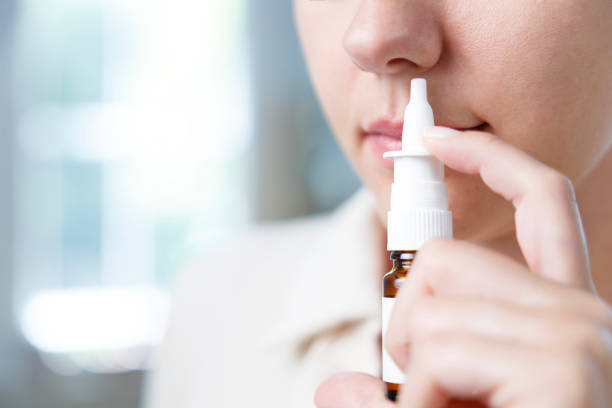USP Nasal Spray Endotoxin Testing
The USP (United States Pharmacopeia) Nasal Spray Endotoxin Test is a critical procedure designed to ensure the safety and purity of nasal spray formulations. This test measures endotoxins, which are toxic substances derived from gram-negative bacteria. These endotoxins can cause adverse reactions in patients, particularly those with compromised immune systems or chronic conditions such as asthma or allergies.
The test is performed using a quantitative chromogenic method that detects the presence of endotoxin in nasal spray products. The assay relies on the activation of Limulus Amebocyte Lysate (LAL), which reacts to endotoxins, producing a color change proportional to the amount of endotoxin present.
This test is essential for pharmaceutical companies as it helps ensure product safety and compliance with regulatory standards. By detecting even trace amounts of endotoxins, this testing method provides assurance that nasal spray products are free from harmful contaminants, thereby protecting patients’ health.
The procedure involves several steps: sample preparation, inoculation into the LAL reagent, incubation, and color development. After a specific time period, the absorbance is measured using a spectrophotometer to quantify endotoxin levels. The results are then reported in terms of endotoxin units (EU/mL).
Pharmaceutical companies often face challenges in ensuring consistent product quality across batches. By incorporating USP Nasal Spray Endotoxin Testing into their QC processes, they can mitigate risks associated with potential contamination and ensure adherence to stringent regulatory requirements.
Inhalation products like nasal sprays are subject to rigorous testing standards due to their direct contact with sensitive mucosal surfaces in the human body. Ensuring that these products meet strict endotoxin limits is crucial for patient safety. Regulatory bodies such as the FDA, EMA, and WHO recommend this test to guarantee product purity.
The USP Nasal Spray Endotoxin Test plays a vital role in maintaining the integrity of nasal spray formulations by identifying potential sources of contamination early in the manufacturing process. This proactive approach helps manufacturers avoid costly recalls and reputational damage while enhancing consumer trust.
Understanding endotoxin levels is not just about regulatory compliance; it's also about delivering products that are safe for long-term use. For R&D teams, this test provides valuable insights into product stability and potential allergen interactions with the human body.
Why Choose This Test
- Maintains patient safety by ensuring free from harmful contaminants.
- Meets stringent regulatory requirements, including those set by FDA, EMA, and WHO.
- Provides early detection of potential sources of contamination.
- Enhances product quality assurance through consistent testing protocols.
- Absence of endotoxin in nasal sprays reduces the risk of adverse reactions and recalls.
- Patient trust is bolstered by reliable and compliant product offerings.
- The test supports long-term stability studies, ensuring sustained product efficacy.
Customer Impact and Satisfaction
Pharmaceutical companies that prioritize USP Nasal Spray Endotoxin Testing experience significant benefits. They not only meet regulatory requirements but also enhance their reputation by delivering safe and high-quality products. Customer satisfaction is directly correlated with the trust placed in these manufacturers, leading to increased loyalty and market share.
By incorporating this testing into their QC processes, companies can avoid costly recalls and associated negative publicity. This proactive approach ensures that patients receive safe medications, thereby fostering a positive brand image and long-term customer relationships.
Competitive Advantage and Market Impact
- Compliance with USP standards differentiates brands in the competitive market by ensuring high product quality.
- Incorporating this test enhances corporate reputation, attracting more customers and investors.
- Achieving early detection of contamination minimizes production downtime and financial losses.
- Ensuring endotoxin-free products is a key factor in maintaining patient trust and satisfaction.
- The ability to consistently meet stringent testing standards can lead to increased market share.
In conclusion, USP Nasal Spray Endotoxin Testing plays a pivotal role in safeguarding patient health and ensuring product integrity. By adopting this rigorous procedure, pharmaceutical companies not only comply with regulatory standards but also gain a competitive edge in the marketplace.





